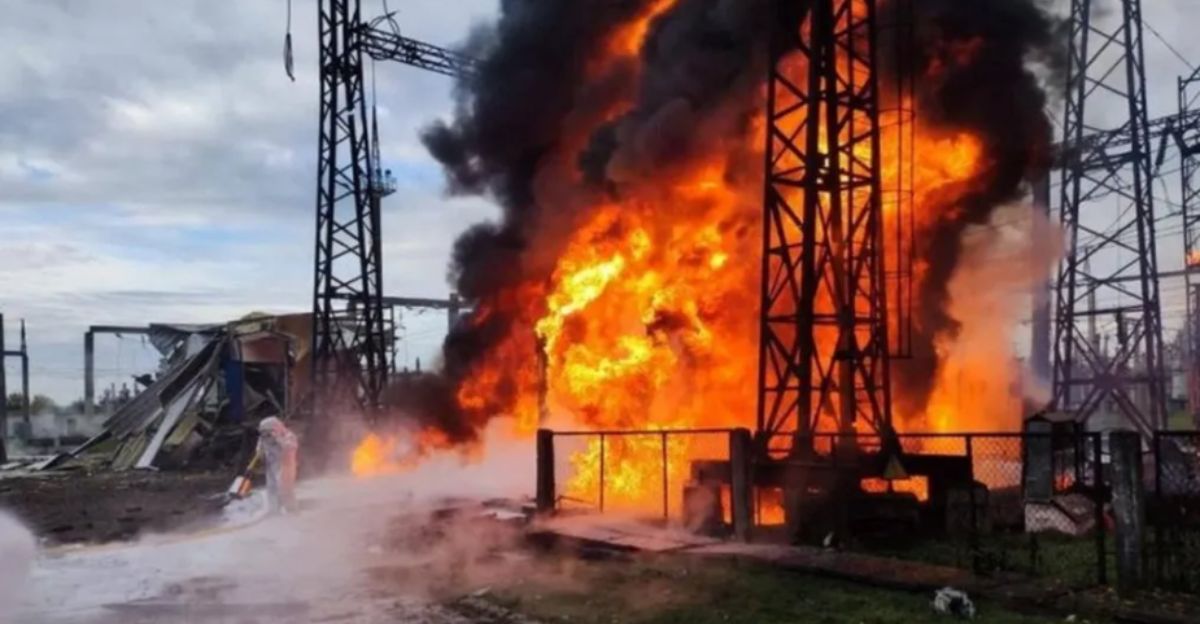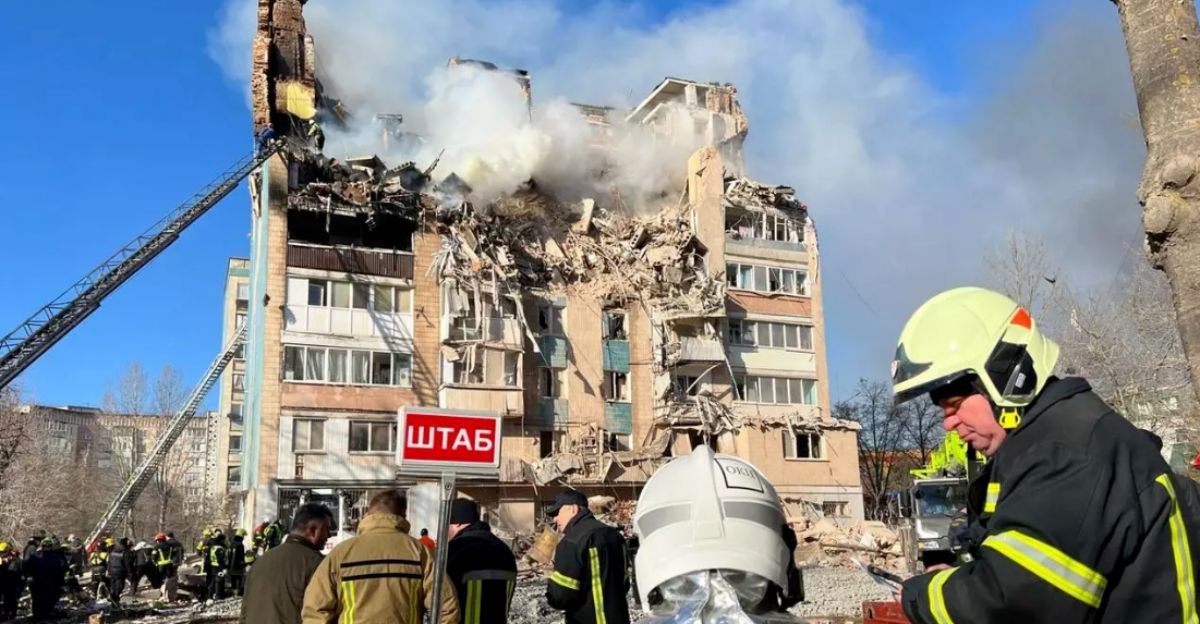
Ukrainian civilians faced a harrowing night as air raid sirens pierced the darkness across six oblasts on November 18-19, 2025. Waves of incoming threats overwhelmed radar systems, sending millions into shelters during the pre-dawn hours. As daylight revealed the aftermath, the scale of the assault became clear: 524 aerial vehicles, including drones and missiles, were launched against critical infrastructure and residential areas, marking one of the heaviest bombardments in recent months. The immediate impact on human lives was both staggering and grim.
Russian forces deployed an unprecedented mix of 476 drones and 48 missiles, signaling a tactical shift in Russia’s campaign. The assault featured 40 Kh-101 cruise missiles launched from Vologda and Astrakhan, alongside Kalibr cruise missiles from the Black Sea. The drone fleet included Shahed and Gerbera models, operating in coordinated waves across a 1,000-kilometer front. Ukrainian Air Force tracking systems monitored all 524 vehicles as they entered Ukrainian airspace, pushing air defenses to their limits with the sheer volume and variety of threats. This coordinated approach demonstrated Russia’s evolving strategy to overwhelm Ukrainian defensive capabilities through saturation tactics.
Escalating Pattern of Attacks

Russian aerial attacks have escalated dramatically throughout 2025, with October recording a 2.5-year high in missile strikes. Since the invasion in February 2022, the Kremlin has consistently targeted Ukraine’s energy grid during winter months, aiming to weaken civilian morale and critical infrastructure. Notable large-scale attacks occurred on September 7, which saw 810 drones launched in the largest aerial bombardment of the war, and September 28, demonstrating a methodical approach with monthly strikes growing in strength and sophistication. The November 19 assault continued this dangerous pattern, featuring advanced missile types and coordinated drone swarms that complicate Ukraine’s defensive strategies and reflect an accelerating trajectory of escalation that threatens to destabilize the region further.
Strained Defense Systems and Resource Challenges

Ukrainian air defense forces have intercepted thousands of aerial threats in 2025, achieving notable success despite facing significant resource constraints. The September 7 attack required defense against 810 drones, while October saw 5,298 drones and 270 missiles launched against Ukrainian positions. Air defense units operate a complex mix of Soviet-era systems and Western-supplied Patriots and NASAMS, creating a patchwork defense vulnerable to saturation tactics that exploit system limitations and coordination gaps. Ongoing ammunition shortages for Soviet-caliber systems exacerbate these challenges significantly, as delays in Western military aid complicate strategic positioning and force prioritization of critical infrastructure protection over rural areas. Reports indicate that while air defenses managed to intercept a significant number of threats, the continuous barrage puts immense pressure on available ammunition supplies and operational capacity, straining resources to dangerous limits during this critical period in the conflict.
Human Cost and Immediate Aftermath

By 10:00 AM on November 19, authorities confirmed at least 26 civilians killed and 139 injured across six oblasts, making this one of the deadliest attacks of the year. The death toll subsequently rose to 34-35 people as rescue efforts continued and additional casualties were confirmed. Ternopil suffered the heaviest casualties when a single Kh-101 cruise missile destroyed multiple floors of a residential apartment building, claiming 26 lives including three children. Struck around 5:00 AM when many residents were asleep, the attack created immediate chaos as families fled their homes. Rescue teams worked tirelessly to locate survivors in the wreckage, with reports of trapped individuals persisting well into the day. These real-life experiences illustrate the immense human cost of such attacks, grounding devastating statistics in the lives of those directly affected and reminding observers of the ongoing suffering endured by Ukrainian civilians caught in this relentless conflict.
International Response and Path Forward

The international community faces an urgent need to respond to escalating violence and increasing casualties. Western military aid and humanitarian support have become critical in facing sustained assaults, yet political delays and resource allocation challenges strain the ability to respond effectively. While nations worldwide pledge solidarity with Ukraine, the pace of assistance varies significantly, creating operational challenges on the ground where urgent needs often outweigh available resources. Sustained international cooperation through increased military support, humanitarian aid, and diplomatic efforts remains vital in stabilizing this fragile situation. Organizations such as Plan International are actively coordinating rescue operations, housing assistance, and mental health support for affected communities. Continued vigilance in monitoring developments and maintaining focus on Ukraine’s humanitarian crisis are essential for mobilizing adequate resources and ensuring timely responses to emerging risks in the region.